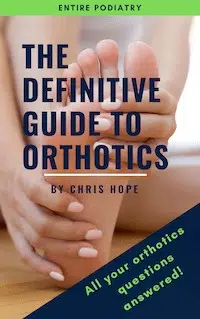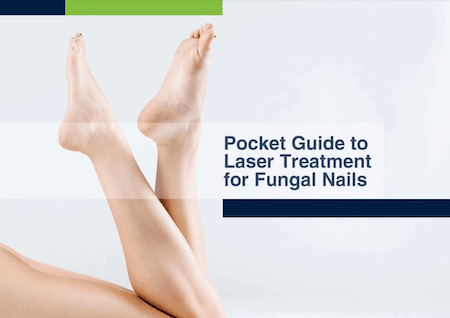Nail Surgery
Ingrown toenail treatment can be carried out during your initial consultation and if it is only minor then often the ingrowing portion of the nail is removed by trimming the nail in the corner only. This ‘conservative’ treatment involves trimming away the ingrown portion of the nail to provide immediate relief. For many people this type of ingrown toenail treatment is all that is required to manage their ingrown nail.
Cost of Ingrown Toenails Treatment
If the nail is too painful then a local anaesthetic injection may be provided to manage the pain. There is an additional charge for this local anaesthetic.
If your ingrown nail is a recurrent issue and is unable to be treated by the standard ‘conservative’ treatment then you may benefit from ingrown toenail surgery.
We offer both permanent and non-permanent surgical procedures and there are a variety of reasons that you may opt for one over the other. It is best for you to talk to your podiatrist to determine which procedure is best for you.
Find out more about the cost of ingrown toenail treatment.
Non-Permanent Correction of Ingrown Nail
Non-permanent ingrown nail surgery involves removing a portion of the nail, which is growing in, right down to the base. Firstly a cold spray is used on the skin and then we numb your toe with a local anaesthetic. We only remove a small portion of nail so that the recovery can be is as quick as possible.
This technique does not prevent regrowth and we most commonly do this if this is the first time that you have had an ingrown toenail. We would often suggest this also if there is a lot of infection around the nail.
Permanent Correction of Ingrown Nail
Permanent ingrown nail surgery involves removing the nail right down to the base and applying a chemical to neutralise the nail matrix so it does not grow back again. We try to take out the minimal amount of nail so that your toenail will still look normal again after it has healed. We still use the cold spray and anaesthetic.
We only perform this technique if you have had persistent ingrown nails on the same toe over a period of time and it has not improved with conservative treatments.
Cost of Permanent Correction of Ingrown Nail
The cost depends on the number of nail edges that require surgery. Read more about the cost of permanent correction of ingrown nails on our pricing page.
A follow-up review appointment is also recommended 3-5 days after either type of ingrown toenail surgery, for which there is a standard consultation fee.
Are Antibiotics Essential to Treat an Ingrown Toenail?
Studies have shown that antibiotics are virtually never required when treating ingrown toenails. They generally do not benefit with the healing1.
When you have an ingrown toenail it is similar to when you have a splinter stuck in your skin. If you have an infection from a splinter you must remove the splinter to clear the infection. We use the same logic when treating an ingrown toenail. If the offending piece of nail, which is piercing the skin, is removed then the majority of patients will heal fine without taking antibiotics
Sometimes we see patients who have been on antibiotics for an extended period of time for ingrown toenails. There can be dangers to taking antibiotics and if you take too many you may become resistant to it later when you need them for a more severe problem. If your infection does not clear right away or if you have a compromised immune system, then we would likely suggest that you go on a course of antibiotics.
Ingrown Toenail Surgery Cost with Insurance
Ingrown toenail surgery costs in Australia may be covered by private health insurance. Please talk to our team and we can provide you with the relevant item numbers for you to obtain a quote through your health insurance. We have a HICAPS terminal and are able to process your claim on site.
Reference : 1 Reyzelman, a. et. al. Are Antibiotics Necessary in the Treatment of Locally Infected Ingrown Toenails? Arch Family Medicine, 2000.
Wart Surgery
Warts are small, rough or hard growths on the skin, that are caused by the human papilloma virus (HPV). The wart-causing virus can spread easily and may present as a cluster of warts. Warts that occur on the toes or underneath the foot are called plantar warts and can be painful when walking or standing. It can also be painful when pressure is applied to the sides of a wart.
How can I tell if I have a wart?
Warts usually have tiny blood vessels at the base of the growth (which can look like small black dots in the centre of the wart), and a lack of normal skin lines (as fingerprints go around the growth). Diagnosis of a wart may be confirmed by shaving down the thickened skin and looking for these signs.
Treatment of Plantar Warts
Various options are available for treating warts including topical medications, laser and surgical needling.
Surgical Needling
Our podiatrists can perform a needling procedure where the wart is punctured with a small needle to cause bleeding and stimulate the body’s immune system to resolve the infection and clear the wart. This procedure is performed under local anaesthetic. The treatment is appropriate for all warts although we often treat the original or ‘mother’ wart in the instance. After the needling is performed an antiseptic is applied and the dressing can be removed after 3 days. A bruising/discomfort is felt for a few days after the procedure and a review is done by the podiatrist after 1 month. Sometimes further needling maybe recommended which can be reviewed by the podiatrist after 3 months.
How To Get Rid of Stubborn Plantar Warts
If you have tried everything from freezing to needling to topical medications and nothing has worked, try laser. Read more about our laser treatment for warts or make a no obligation appointment to discuss further with us today.




